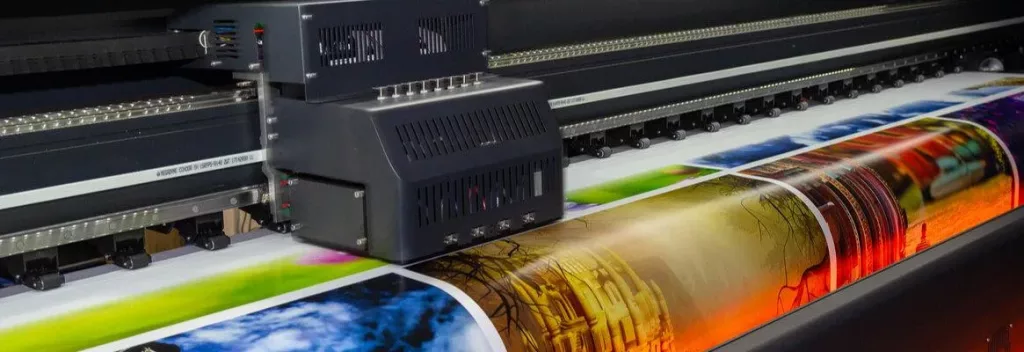Digital printing has become a popular choice for many businesses due to its flexibility, efficiency, and potential sustainability benefits. However, the question of sustainability encompasses various aspects, from materials to processes. Let’s delve deeper into the sustainability of digital printing.

1. Reduced Waste Generation
One of the most significant advantages of digital printing is its ability to minimize waste. Traditional printing methods often require extensive setup, including plate creation and lengthy print runs. This can lead to substantial waste if the printed materials exceed demand.
- Short Runs: Digital printing allows for short print runs, meaning businesses can produce only what is needed. This is especially beneficial for items like marketing materials or labels, where demand may fluctuate.
- Less Spoilage: Since there’s no need for setup plates, the initial waste associated with test prints and adjustments is significantly reduced.
2. Lower Chemical Use
In traditional printing, various chemicals are employed for preparing plates and cleaning equipment. Digital printing eliminates much of this need, relying instead on digital files to create prints.
- Fewer Solvents: Digital printing processes typically use fewer solvents and harmful chemicals, reducing environmental impact.
- Eco-Friendly Inks: Many digital printers now utilize eco-friendly inks, such as water-based or vegetable-based inks, which are less toxic and have a lower carbon footprint.
3. Energy Efficiency
Digital printers often consume less energy than their traditional counterparts. This efficiency is due to:
- On-Demand Printing: The ability to print only what is needed reduces idle time and energy consumption associated with large print runs.
- Shorter Setup Times: Digital printing has quicker setup times, leading to less energy use during the production process.
4. Use of Sustainable Materials
The sustainability of digital printing also depends on the materials used in the printing process. Many digital printing companies are now focusing on sustainable substrates:
- Recyclable and Biodegradable Materials: Businesses can choose from various eco-friendly papers and materials that are either recyclable or biodegradable, enhancing the sustainability of the final product.
- Sourcing Practices: Using materials sourced from sustainable forests or manufacturers that prioritize eco-friendly practices further supports sustainability.
5. Custom and On-Demand Solutions
Digital printing allows for highly customized and on-demand solutions:
- Personalization: This technology enables businesses to produce personalized items, which can reduce the need for large inventories and minimize waste.
- Efficient Resource Use: Customization means that businesses only print what is necessary for their target audience, effectively utilizing resources and reducing excess.
6. Supply Chain Benefits
The logistics involved in printing also play a role in sustainability:
- Local Printing: Digital printing can often be done locally, which reduces transportation emissions associated with shipping printed materials over long distances.
- Rapid Turnaround: Quick turnaround times mean less time in transit and more efficient distribution, further reducing the carbon footprint.
7. Lifecycle Considerations
A sustainable approach to printing considers the entire lifecycle of the printed product:
- End-of-Life Options: Digital prints can be designed with recyclability in mind. Choosing inks and materials that can be easily recycled contributes to a circular economy.
- Waste Management Practices: Companies can implement responsible waste management practices, ensuring that both printed materials and packaging are disposed of or recycled properly.
Conclusion
In conclusion, digital printing presents several sustainable advantages over traditional printing methods, primarily through waste reduction, energy efficiency, and the use of eco-friendly materials. However, the sustainability of digital printing is not solely determined by the technology itself; it also relies on the choices made throughout the printing process, from the selection of inks and substrates to waste management practices.
For businesses aiming to enhance their sustainability efforts, adopting digital printing can be a strategic choice. By partnering with providers that prioritize eco-friendly practices, businesses can contribute to a more sustainable future in the printing industry while meeting consumer demand for responsible products. As consumers increasingly seek out brands that demonstrate environmental responsibility, leveraging the sustainable aspects of digital printing can provide a competitive edge.
At Colorful Packaging, we understand the importance of these practices and are committed to providing innovative packaging solutions that prioritize sustainability. By integrating advanced digital printing technology with eco-friendly materials, we help our clients not only meet their branding needs but also contribute to a healthier planet.
As consumers increasingly seek out environmentally responsible brands, investing in sustainable digital printing with Colorful Packaging is not just a smart business decision—it’s a step towards a more sustainable future. Let’s work together to create packaging solutions that protect your products while also protecting the environment.

